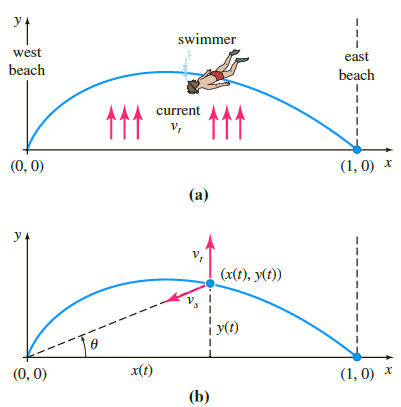The current speed v r of a straight river such as that in Problem 28 is usually
Question:
Data from problem 28
In the following figure (a) suppose that the y-axis and the dashed vertical line x = 1 represent, respectively, the straight west and east beaches of a river that is 1 mile wide. The river €“flows northward with a velocity vr, where |vr| = vr mi/h is a constant. A man enters the current at the point (1, 0) on the east shore and swims in a direction and rate relative to the river given by the vector vs, where the speed |vs| = vs mi/h is a constant. The man wants to reach the west beach exactly at (0,0) and so swims in such a manner that keeps his velocity vector vs always directed toward the point (0, 0). Use figure (b) as an aid in showing that a mathematical model for the path of the swimmer in the river is
dy/dx = vsy €“ vrˆš(x2 + y2)/vsx.

Step by Step Answer:

A First Course in Differential Equations with Modeling Applications
ISBN: 978-1305965720
11th edition
Authors: Dennis G. Zill





